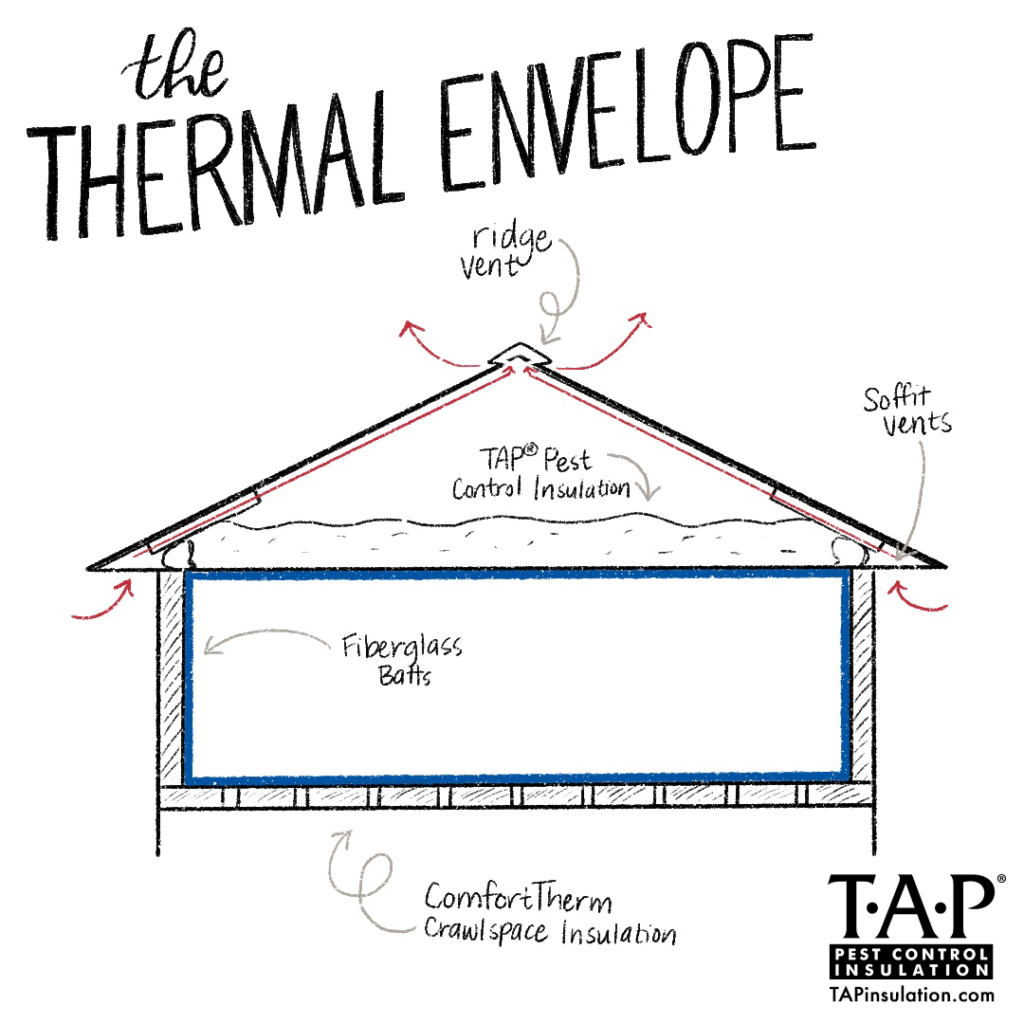TAP® Pest Control Insulation, when installed in the attic and walls of a home, helps to complement the home’s building envelope. No, we are not talking about something that could be sent by USPS. The building envelope directly correlates to the design and construction of your home. Join us for a quick look.
The Building Envelope Explained

The structure of any home that provides a physical barrier between the exterior and interior environments including the foundation, wall assembly, flooring, roofing, and door/window systems is considered the building envelope. Its basic purpose is to protect the home’s occupants and internal components (i.e., furniture, lighting, equipment, HVAC, personal belongings, etc.) from environmental concerns such as ultraviolet radiation, wind, temperature changes (seasonal changes as well as global warming), humidity, and precipitation.
Functions of the Building Envelope
The three main functions are:
- Control exchanges of heat, air, and water between the exterior and the interior spaces of the home.
- Ensure structural support for the home against both external and internal forces and pressure.
- Create a ‘pleasing-to-the-eye” and functional finish for the pleasure of the home’s occupants and passers-by.
The connections between these three main functions and their compatibility with one another is essential to the building envelope’s success.
Two Types of Building Envelopes in Residential Construction
The two types are tight envelopes and light envelopes. These two distinctions refer to how the envelope allows air to flow throughout the structure. When air is allowed to flow more freely, the envelope is referred to as ‘light.’ The reverse, ‘strict,’ is the term used when the building’s envelope purposefully restricts air admittance and movement throughout. The choice of light or strict is often based first on location taking into account the environmental forces and secondly as purely aesthetic.
Environmental Considerations
The external walls of the home’s building envelope are critical in sustaining the weight and pressure from the roof and any upper floors. Absorbed by ‘load-bearing‘ walls, the weight and pressure are transferred down into the envelope’s foundation. The success of this transfer helps the home withstand the force of natural disasters such as heavy storms, tornadoes, hurricanes, or earthquakes.
Ventilation bringing in fresh air is also a major consideration. Preventing damp air in more humid climates helps keep moisture buildup, mildew, and mold at bay. An envelope that is sensitive and responsive to the exterior elements creates a more healthy interior for the home’s occupants and their belongings.
Summer and winter months can wreak havoc on the home’s building envelope. Therefore, insulation, such as EPA-registered TAP® Pest Control Insulation, in the attic and basement as well as properly set doors and windows are ideal for reinforcing or closing the gap on the home’s envelope. Slowing the amount of heat transfer in the home by way of a higher R-value, helps the building envelope perform optimally.
If you are ready to complement your home’s building envelope while controlling common household pests, speak to your local pest management professional about installing EPA-registered TAP® Pest Control Insulation in your home. Feel free to contact us to locate a TAP® provider in your area or learn more about the building envelope of the home.

